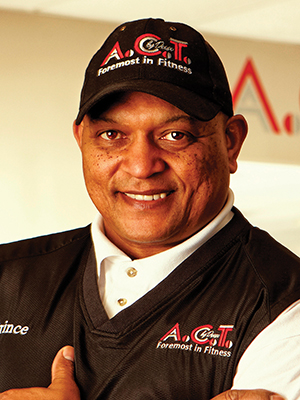 Prince Deese
Prince DeesePrince Deese, an All American Wrestler, a Hall of Fame Football Player, and a State Champion Body Builder, is a certified personal trainer and strength conditioning specialist. Prince Deese and Gina Deese own A.C.T. by Deese, a Fitness & Training Center in Greensboro, NC.
More than 100 million adults in the U.S. are living with diabetes or pre-diabetes, the CDC reported in 2017. Some of the common diabetes symptoms include increased thirst, frequent urination, blurry vision, slow-healing bruises, numbness in feet and hands, and sudden weight loss.
Here are some factors to consider when exercising if the physician has diagnosed Type 2 diabetes.
Monitoring blood sugar
Because of the unique risks associated with some forms of exercise, it is important that people living with diabetes should get medical clearance before working out. It is important to monitor blood sugar levels during and after exercise.
With high-intensity workouts, people with diabetes can experience a sudden spike in blood glucose levels or, sometimes, a rapid fall in glucose levels. If blood sugar level rises above 300 mg/dL or falls below 100 mg/dL, exercise should be discontinued. It is always important to hydrate with a tall drink of water. Insulin or fast-acting sugar sources may be necessary, depending on their condition.
Exercising daily
People with diabetes should do a minimum of 150 minutes of moderate aerobics or 75 minutes of high-intensity workout each week. They should avoid long periods of inactivity and do regular exercise to stabilize liver insulin action. They should also participate in programs that offer combined aerobics and resistance training. This works better than either being performed alone.
Resistance training
Resistance or weight training also has a positive, blood glucose-lowering effect on people with diabetes. This training increases the muscular intake of glucose. Increased muscle mass can further help regulate proper glucose intake. Trainers should encourage muscle strengthening exercises, which affect all the major groups, two or more days a week.
After-meal movement
Research suggests that small bouts of 10-minute exercise after each meal are more beneficial for people with diabetes than a single half-hour of exercise at any point during the day.
Exercise after each meal resulted in lower daily blood-glucose levels. The change was found to be much more pronounced after dinner when most carbohydrate units were consumed and people were generally inactive.
Foot problems
People with diabetes are more susceptible to foot problems because of poor blood flow due to high sugar levels. Checkfeet for blisters or sores before performing physical activity and choose comfortable shoes with a proper fit.
Often there may be many questions when beginning a fitness program. ACT offers complimentary consultations to those who have been diagnosed with a disability to get started on a safe and effective fitness plan. Call 336-617-5304 today to schedule an appointment.

